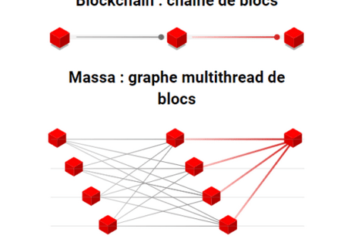The staking is the action to validate transactions on the consensus of evidence issue. It is the big “competitor” of mining which intervenes on the consensus of proof of work. These two actions make it possible to secure the blockchain in the world of cryptocurrencies. The masternode on the other hand is a complete copy of the blockchain . It makes it possible to vote for the evolutions of the project or to add new functionalities to the blockchain. It can implement anonymization systems, for example.
Staking Avantage
Staking is a reward for keeping cryptocurrency in a wallet that’s online. The more cryptocurrency you will own, the more the network will pay you. Platforms such as Binance or Kraken pay you up to 6% per year if you keep Tezos for example in your account. However, this remuneration is low compared to that given to the masternode.
Staking Disadvantage
On the other hand, the remuneration for staking is low compared to that of the masternode, because it must be imagined that the number of people to be paid is much greater. Indeed, you will be useful to the blockchain network but you will not provide additional functionalities. In addition, you are obliged to leave your cryptocurrencies on online platforms. You may then be subject to platform hacks .
Masternode Advantage
Masternodes bring a return on investment which can be very interesting . Indeed, because of recent technology and the access stroke, the competition is much lower than for mining . For example for a masternode of the Energi cryptocurrency (NRG) worth 13,800USD at the beginning of March 2020, you earn 5,945 NRG per year.

Please note, it is strongly recommended to take cryptocurrencies that are old . New cryptocurrencies are riskier because they can lose all of their value quickly.

Masternode Disadvantage
The procedure for setting up a masternode is relatively complex for beginners; a Linux server hosted online on a hosting platform is required. But you also have to configure it to make it work with a local wallet. We must not forget above all about security because you will be sequestering a large number of cryptocurrencies. If the server were to be hacked you could lose all of your funds.
Summary of advantages and disadvantages
| Staking (Proof of Stake – POS) | Masternode (Proof of Service – POSe) | |
| Advantage | Easy to do Is possible from the first token | Brings high yield |
| Inconvenience | Low yield | Complex to set upRequires collateral (minimum amount to be placed in receivership) |
The distribution of rewards
In the case of working cryptocurrencies , it can be seen that the distribution of rewards may differ between masternodes and staking .
For Syndicate cryptocurrency
Each validated block is rewarded with 4.2 coins for masternodes and 1.8 coins for staking.
For 1000 SYNX we obtain as result after 5 months of validations of transactions, respectively 223 SYNX for the masternode against 77 SYNX for the staking.

For Helix cryptocurrency
Each validated block is rewarded with 9 coins for masternodes and 6 coins for staking.
Using the same conditions as for Syndicate, this time the masternodes received 855 HLIX against 196 HLIX for staking.

Conclusion
To conclude, masternodes often offer better returns than staking for the same number of coins. However, it does require a certain level of skill to be implemented. Two platforms are part of this framework for the general public. SimplePosPool which brings the possibility of taking place in mutualized masternodes but which requires that we buy these own cryptocurrencies. Feel-mining offers a turnkey service . You have the option of purchasing all or part of a masternode directly with euros. The Feel-mining team takes care of the maintenance and pays you up to your participation.



